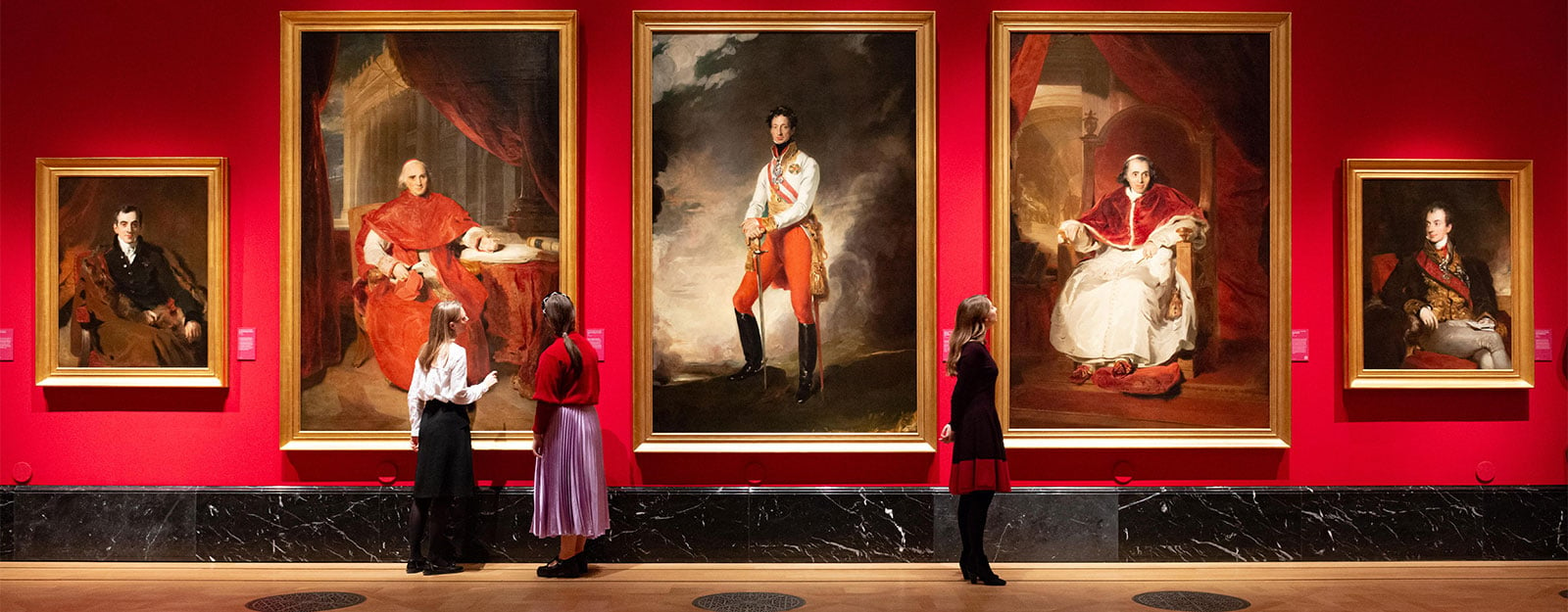
About the Collection
Learn more about the Royal Collection, one of the most important art collections in the world.
Jewels and Insignia
The Crown Jewels, displayed in the Tower of London, comprise the regalia used at coronations since the 17th century. Precious gems have always been an important component in the display of magnificence accompanying the institution of monarchy. The Royal Collection includes several famous individual stones, notably the Koh-I-Nûr diamond, the large spinel known as the Timur Ruby (now set into a necklace), and the Cullinan Diamond, which was presented to King Edward VII by the government of South Africa. The largest diamond ever found, the Cullinan was divided into nine numbered stones, the largest two of which now form part of the Coronation regalia. They are set into the head of the Sovereign’s Sceptre and the band of the Imperial State Crown.
The jewellery collection also encompasses the ceremonial insignia of the Orders of Knighthood, such as the diamond-encrusted Great George belonging to George III and the Garter worn by Prince Albert. A few outstanding early pieces works of jewellery have remained in the Collection, and many antique and renaissance gems (largely cameos and intaglios) were acquired through George III’s purchase of the Consul Smith collection in 1762. The famous 16th-century Darnley Jewel, on display at the Palace of Holyroodhouse, was bought by Queen Victoria.
Further Reading
The Crown Jewels. The History of the Coronation Regalia in the Jewel House of the Tower of London, ed. C.Blair, 2 vols, London 1998
S.J.Patterson, Royal Insignia: British and Foreign Orders of Chivalry from the Royal Collection, London 1997
A. Keay, The Crown Jewels, London, 2011








